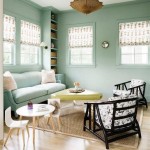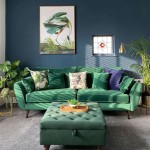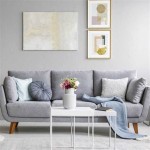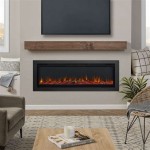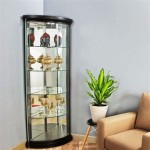Living Room Transformation: Strategies for Optimization and Enjoyment
The living room, often serving as the central hub of a home, demands thoughtful consideration in its design and utilization. It's a multifaceted space expected to accommodate relaxation, entertainment, and socialization. Therefore, strategic planning is essential to maximize its functionality and aesthetic appeal. This article will examine key aspects of living room management, focusing on furniture arrangement, space optimization, and the incorporation of elements that contribute to both comfort and visual harmony.
Optimizing Furniture Arrangement for Flow and Functionality
Furniture arrangement is paramount to a living room's success. Poorly placed furniture can impede movement, restrict conversation, and render the space visually unappealing. Conversely, a well-considered arrangement enhances the room's flow, promotes social interaction, and creates a sense of spaciousness.
The placement of the primary seating area, typically comprised of a sofa and chairs, should prioritize conversation. A natural flow between these pieces encourages interaction. Instead of aligning all furniture against the walls, consider floating the seating area, creating a more intimate and engaging grouping. This often involves placing the sofa a few feet away from the wall, thereby defining the space and allowing for pathways behind it.
The focal point of the room, often a fireplace, television, or large window, should influence furniture placement. The primary seating should be oriented towards this focal point, ensuring unobstructed views. However, avoid solely focusing on the focal point to the detriment of conversation. A U-shaped or L-shaped arrangement can accommodate both viewing and conversation.
Consider the size and scale of furniture relative to the room's dimensions. Overly large furniture can overwhelm a small living room, making it feel cramped. Conversely, undersized furniture in a large living room can appear lost and insignificant. Measure the room carefully before purchasing furniture to ensure appropriate proportions. Use painter's tape to mark out the furniture's footprint on the floor to visualize the arrangement before committing to the purchase.
Traffic flow is another critical factor. Ensure clear pathways throughout the room, allowing easy access from one area to another. Avoid obstructing doorways or creating bottlenecks with furniture. Consider the natural entry points and plan the layout accordingly. A simple test is to walk through the room, paying attention to where you naturally move. The furniture arrangement should support these natural pathways.
Rugs can play a significant role in defining the seating area and adding warmth and texture to the room. A rug should be large enough to anchor the furniture, with at least the front legs of the sofa and chairs resting on it. This visually connects the seating group and creates a cohesive look. For smaller rooms, a slightly smaller rug that only sits beneath the front legs of the seating still offers similar benefits.
Maximizing Space and Storage Solutions
Effective space utilization is crucial, particularly in smaller living rooms. Strategic storage solutions help to declutter the space and create a more organized and inviting atmosphere. The goal is to maximize storage without sacrificing valuable floor space or compromising the room's aesthetic appeal.
Vertical storage is a highly effective technique. Shelving units, bookcases, and wall-mounted cabinets utilize vertical space, providing ample storage without encroaching on the floor area. Consider installing shelves that extend to the ceiling to maximize storage capacity. Open shelving can display decorative items and books, while closed cabinets can conceal clutter.
Multi-functional furniture pieces offer a practical approach to space optimization. Coffee tables with built-in drawers or lift-top mechanisms provide hidden storage for magazines, remotes, and other items. Ottomans with storage compartments offer additional seating and storage. Sleeper sofas provide sleeping accommodations for guests without requiring a dedicated guest room.
Consider incorporating storage into unexpected places. Baskets placed under coffee tables or side tables can hold blankets, pillows, or toys. A console table behind the sofa can provide display space and storage. Utilizing the space beneath windows for built-in benches with storage compartments is another clever solution.
Mirror placement can visually expand the room and enhance the sense of spaciousness. Strategically placed mirrors reflect light and create the illusion of a larger space. Consider placing a large mirror on a wall opposite a window to maximize the effect. Smaller mirrors grouped together can also create a visually interesting focal point.
Decluttering is essential for maximizing space. Regularly assess the items in the living room and remove anything that is no longer needed or used. Donate or discard unwanted items to create a more streamlined and organized space. A minimalist approach can be particularly effective in smaller living rooms, allowing the focus to remain on the essential furniture and decor.
Wall-mounted televisions are preferable to stand-alone units, especially in smaller living rooms. Mounting the TV frees up floor space and creates a cleaner, more modern look. Consider concealing the cords behind the wall for a more polished appearance. Alternatively, cord management systems can be used to keep the cords organized and out of sight.
Enhancing Comfort and Aesthetic Appeal Through Decor and Lighting
The selection of decor and lighting plays a significant role in shaping the living room's atmosphere and overall aesthetic. These elements contribute to the room's comfort, visual appeal, and functionality, transforming it from a mere space into a welcoming and inviting environment.
Lighting is a crucial component. Utilize a combination of ambient, task, and accent lighting to create a layered and versatile lighting scheme. Ambient lighting provides overall illumination, while task lighting focuses on specific areas, such as reading nooks. Accent lighting highlights architectural features, artwork, or decorative objects. Dimmers allow for adjusting the lighting intensity to create different moods.
Choose light fixtures that complement the room's style and decor. Floor lamps, table lamps, and chandeliers can add visual interest and enhance the room's aesthetic. Consider the size and scale of the fixtures relative to the room's dimensions. Overly large fixtures can overwhelm a small living room, while undersized fixtures can appear insignificant in a large space.
Artwork and accessories can add personality and character to the living room. Select pieces that reflect personal tastes and interests. Consider the color palette and style of the artwork and accessories, ensuring they complement the room's overall decor. Avoid cluttering the space with too many items; a few well-chosen pieces can have a greater impact.
Soft furnishings, such as throw pillows and blankets, add comfort and texture to the living room. Choose fabrics that are soft and inviting, and select colors and patterns that complement the room's color scheme. Layering different textures and patterns can add visual interest and create a more inviting atmosphere.
Plants can bring life and vibrancy to the living room. Choose plants that thrive in the room's lighting conditions and consider the size and scale of the plants relative to the space. Plants not only add visual appeal but also improve air quality and create a more relaxing environment. Incorporate a variety of greenery to create an indoor oasis.
Consider the room's color palette when selecting decor and accessories. A cohesive color scheme creates a sense of harmony and visual appeal. Choose colors that reflect personal preferences and create the desired mood. Neutral colors can create a calming and relaxing atmosphere, while bolder colors can add energy and excitement. Incorporate pops of color through artwork, accessories, or throw pillows.
Window treatments, such as curtains, blinds, or shades, can enhance the room's aesthetic and control the amount of natural light. Choose window treatments that complement the room's style and decor. Light-filtering curtains can provide privacy while still allowing natural light to enter the room, while blackout curtains can block out light for sleeping or watching movies. The length and fullness of the curtains can also impact the room's overall look and feel. Floor-to-ceiling curtains can create a sense of height and drama, while shorter curtains can create a more casual and relaxed atmosphere.

80 Gorgeous Living Room Decorating Ideas For Every Style

80 Gorgeous Living Room Decorating Ideas For Every Style

How To Easily Transform A Dated Living Room

17 Small Apartment Living Room Ideas To Make The Most Of Your Space

This Living Room Makeover Gave A Nurse Her Own Zen Space

54 Simple Ideas For Small Living Room Dining Combo Edward George

What Can I Do With My Living Room Alcoves The Mini Interior Design Company

Furniture Placement Around Windows And Doors Jennifer Rizzo

15 Decorative Living Room Furniture Layouts Taskrabbit Blog

Lake House Living Room Decor The Lilypad Cottage

